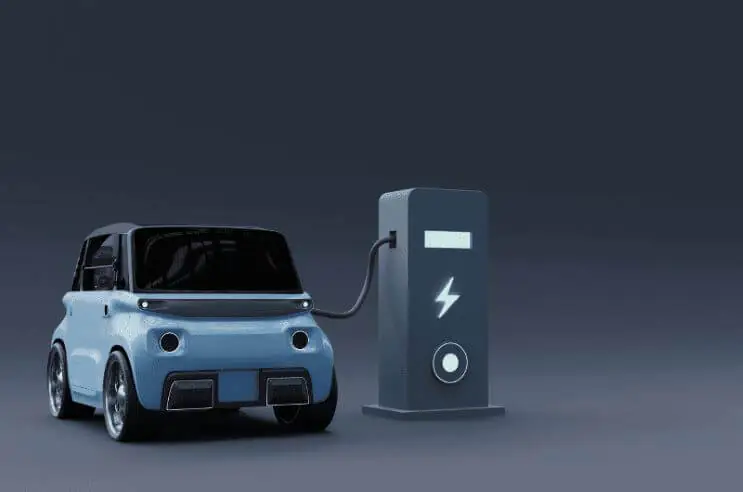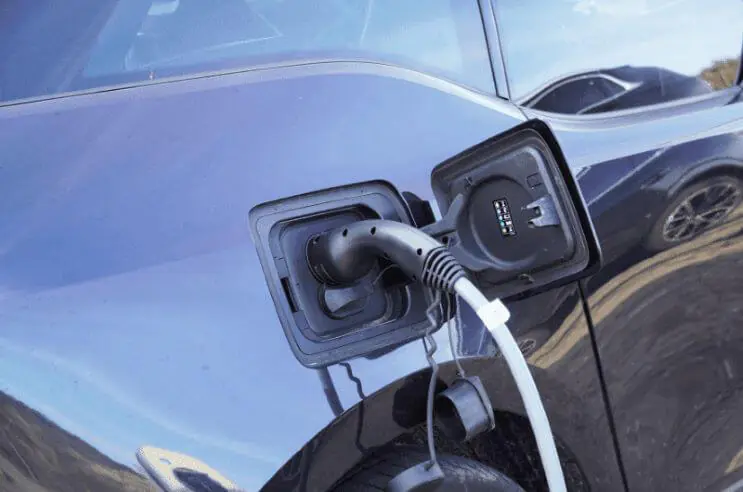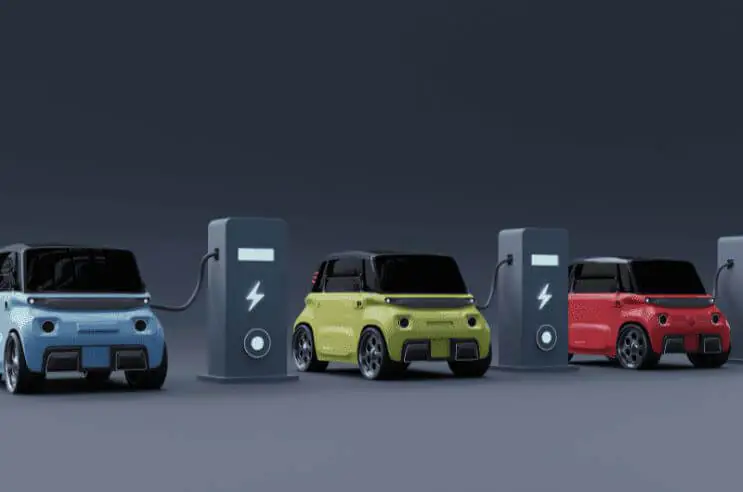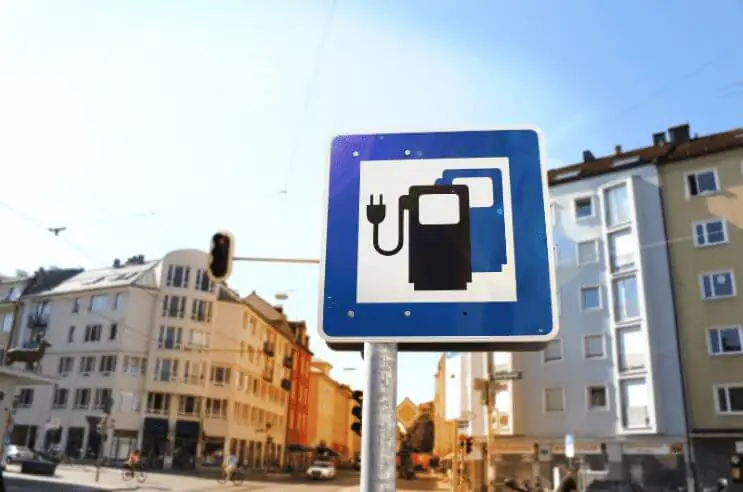Future of electromobility: 10 million electronic vehicles sold in 2023 and what can we expect in 2040?
The history of human mobility is distinguished by a constant evolution of transportation systems, the earliest forms being walking and animal-drawn carts to the present period of combustion engine-powered cars. As the world’s attention shifts toward environmental sustainability, electromobility emerges as a pillar of responsible progress. This paradigm change is about altering our relationship with the world we travel through, not merely improving our vehicles.

Source: www.canva.com
The year 2022 achieved unparalleled milestones with a significant increase in electric vehicle (EV) sales that exceeded 10 million units. An astounding 14% of all new automobiles sold used electric propulsion, up from 9% in 2021 and a significant increase from the modest 5% in 2020.
As a result, the global EV fleet grew to almost 26 million, a 60% increase over the previous year. The enthusiasm carried over into 2023 with an incredible 2.3 million EVs sold in the first quarter alone, representing a 25% increase over the same period in 2022. According to projections, EV sales will reach 14.1 million units in 2023, representing a significant 34% increase over 2022 (Neil King, EV-volumes; virta.global, 2023).
Electromobility reshaping transportation and logistics
Electromobility, at its core, indicates a significant shift from the familiar rumble of internal combustion engines, bringing in a new era defined by electric propulsion technologies. The silent force of electric motors, which replaces the once-omnipresent scream of engines with a gentle hum, is at the heart of this shift. The adoption of electric vehicles signifies a paradigm shift in our relationship with transportation that goes beyond a simple technology update.
The logistics sector is progressing every day. The attractiveness of electromobility stems not just from its environmental advantages, but also from the reinvention of the driving experience. With the integration of smart technologies and improvements in autonomous driving, electric vehicles are transformed into interconnected nodes in a broad network of intelligent transportation.
Tip: Find out more about how advanced technology is revolutionizing logistics.

Source: www.canva.com
History Of Mobility and Electromobility
Footprints on old paths and the rhythmic clip-clop of hooves against cobblestone roads mark the beginnings of mobility. As cultures developed, so did modes of transportation, which progressed from simple walking to the introduction of animal-drawn carts.
With the proliferation of combustion engine-powered vehicles in the 19th and 20th centuries, there was a seismic shift. The screams of engines rang through cityscapes, signaling the beginning of an era of extraordinary speed and communication. Here are the milestones of engine-powered vehicles:
- Steam-powered vehicles: The first steam-powered vehicle was built in 1769 by Nicolas-Joseph Cugnot. Steam-powered vehicles gained major attention in the 19th century, but they had several limitations, such as long warm-up times and the need for extensive infrastructure.
- Combustion engine innovation: Significant advancements in the development of internal combustion engines were made in the late 19th century. Karl Benz created and patented the Motorwagen in 1885; it is largely regarded as the first actual internal combustion engine-powered automobile. This invention is what the era of the automobile began with.
- Mass production: Early in the 20th century, Henry Ford introduced assembly line production procedures, which completely changed not only the automotive industry, but mass production gradually spread to many other sectors. When the Model T was initially mass-produced in 1908, it became more widely available and inexpensive for the average person to own a car.
- Globalization and diversification: The automotive industry began to globalize in the middle of the 20th century. Different geographical areas developed distinct tastes and styles for cars. Furthermore, improvements in emission control and fuel efficiency were prioritized.
- Computerization and Automation: Computers were incorporated into automobiles in the second half of the 20th century, which enhanced automation, safety features, and fuel economy. Electronic control units (ECUs) have become essential to how cars operate.
However, this advancement came at a cost, with environmental worries and reliance on fossil fuels looming big.
In the midst of this trend, electromobility arose as a light of hope. EVs can be traced back to the 19th century, providing a look into a different future of transportation. Pioneers and visionaries such as Thomas Davenport and Thomas Parker created early electric car prototypes that sparked public interest. But despite early excitement, there were a number of obstacles to the widespread use of electric cars. Electric cars’ practicality and convenience were hampered by technological constraints, such as outdated battery technology and a deficient infrastructure for charging.
In addition, the advent of the internal combustion engine and the discovery as well as the exploitation of plentiful fossil fuel resources during this time period contributed to a preference for gasoline-powered vehicles due to their increased efficiency and range. Thanks to it, the entire potential of electromobility has emerged in the 21st century.
Breakthroughs in battery technology have been critical in the history of electromobility. These advancements, particularly in recent years, have not only increased the efficiency of electric vehicles but have also made them more viable for mass deployment. Energy storage evolution demonstrates our dedication to sustainability, bringing electromobility to the forefront of a transportation revolution.
Future of Electromobility
According to the International Energy Agency, by 2025, electric vehicles might account for up to 20% of new automobile sales, and by 2040, they could account for nearly all new car sales. To completely fulfill electromobility’s promise, issues such as fleet turnover rates, auto manufacturer changes, legislation, and infrastructure development must be solved (progressive.com).
The reliability and durability of existing gas cars influence fleet turnover, which influences a higher rate of EV adoption. Automakers have committed to shifting to all-electric options, with varied dates, and legislation in some jurisdictions have already called for a ban on new gasoline-powered car sales from 2035.
Infrastructure development, notably the worldwide installation of charging stations, remains a vital component of ensuring the widespread adoption of electric vehicles. Overcoming costs, driving habits, and range concerns will be critical for consumers to fully accept electric vehicles. As these challenges are overcome, the future of electromobility appears to be on the verge of a paradigm shift, with electric vehicles progressively becoming a dominant force in the automotive industry.

Source: www.canva.com
Advantages and Disadvantages of Electromobility
Electric motors, like all other forms of engines, have advantages and disadvantages. Let’s take a closer look at these:
Advantages
Environmental Benefits: Electromobility cuts carbon emissions and air pollution dramatically, aiding worldwide efforts to address climate change.
According to research by the European Energy Agency (2018), driving an electric automobile emits between 17 and 30 percent less carbon dioxide per mile than a petrol or diesel vehicle, even when power is generated. Using low-carbon electricity also significantly reduces the emissions from the production of electricity.
Cost Savings: Electric vehicles are an economically appealing choice for both consumers and businesses due to lower fuel and maintenance costs.
A vehicle’s e-battery bundle is the most expensive component of the EV. For example, the lithium-ion batteries of the Nissan LEAF originally cost one-third of the vehicle’s entire price. EV adoption will be encouraged because EVs have a high energy density and battery costs are predicted to decrease by 70% by 2025. This is seen in the instance of lithium-ion batteries (Li-Ion), the cost of which has significantly decreased as a result of their increasing usage in laptops and mobile devices (Fayez Alanazi, 2023).
Government Support: While all governments are not inclined toward it, some governments and their incentives and activities support the use of electromobility, creating a favorable climate for sustainable transportation.
Disadvantages
Challenges in Infrastructure: Electric car adoption is hampered by a lack of charging infrastructure and concerns about range anxiety.
The International Energy Agency (2023) stated in Global EV Outlook 2021 that the number of public slow and fast chargers required globally by 2030 might range between 40 million and 230 million, depending on the rate of EV adoption and government policy.
There were 2.7 million public charging points globally at the end of 2022, with over 900,000 of them constructed in 2022, representing a 55% increase over 2021 stock and comparable to the pre-pandemic growth rate of 50% between 2015 and 2019.
Environmental Concerns: While EVs emit no emissions while in use, there are worries about the environmental impact of battery production and disposal.
According to the European Commission’s Joint Research Centre, the manufacturing of an average electric vehicle battery accounts for around 47-61% of the vehicle’s overall carbon footprint, depending on the energy mix used during production.
Depending on usage and battery chemistry, EV batteries have a limited lifespan of 8 to 15 years. The International Energy Agency reported a global recycling rate of roughly 5% in 2019, owing to the complexity of battery chemistries and the absence of standardized recycling infrastructure. By 2035, the European Union hopes to have at least 95% of EV batteries recycled (Pascal Muller and others, 2021).
Technological limitations: Ongoing research involves addressing battery technology limits, with the goal of improving energy density, charging times, and overall performance.

Source: www.canva.com
Electromobility Across Different Vehicle Types
Electromobility’s disruptive impact spans across multiple modes of transportation, ushering in a new era of sustainable and efficient mobility options. The field of electromobility is widespread and active, with each sector bringing distinct difficulties and opportunities, ranging from miniature electric vehicles to heavy-duty trucks, electric ships, and even electrically propelled aircraft.
Maritime Transportation
The maritime industry is experiencing a shift toward electrification to lessen the enormous environmental impact of shipping.
Yara International’s „Yara Birkeland,” an autonomous electric container ship, is one such example. This ship is an important step toward zero-emission transportation, demonstrating the possibilities for electrification in maritime transport. Find out more about Yara Birkeland.
Air transportation
Electric aviation is a new frontier that has the potential to revolutionize air travel. Prototypes such as the Alice Electric Aircraft by Israeli company Eviation Aircraft demonstrate the possibility of having electric passenger planes. These improvements not only promise lower carbon emissions, but also quieter and more sustainable aviation travel in the future.
Tip: Do you want to find out more about The Evolution of Air Freight Transportation? Read our article where you will read about the evolution from flight pioneers to sky giants with an 88.4-meter wingspan.
Rail transportation
Rail electrification has been a long-standing practice in many places. High-speed electric trains, such as Japan’s Shinkansen, have been in service for decades. Advances in electric rail technologies continue to contribute to cleaner and more efficient mass transit options as demand for sustainable rail solutions develops.

Source: www.canva.com
Road Transportation
Electric trucks, a key component of electromobility, have emerged as game changers in freight transportation. Companies like Tesla have pioneered the way with innovative inventions like the Tesla Semi, an all-electric Class 8 heavy-duty vehicle. The Tesla Semi, which was designed to reshape the freight business, has amazing features such as a sleek design, long-range capability, and semi-autonomous driving capabilities.
Companies Using EVs already
Several foresighted businesses are already incorporating electromobility into their operations. Amazon, for example, has committed to electrifying its delivery fleet, with the goal of reaching carbon neutrality by 2040.
Similarly, to decrease its environmental impact, shipping company UPS has invested in electric vehicles and charging infrastructure.
Google has adopted electric vehicles into its corporate fleet as part of its goal to minimize its carbon footprint, setting an example for environmentally responsible transportation options.
Furthermore, Coca-Cola has launched an ambitious road toward sustainability by introducing electric delivery trucks into its distribution network. This strategic step is consistent with Coca-Cola’s overall commitment to environmental stewardship, demonstrating how several industries are leveraging electromobility to construct a cleaner future.
The most famous race Formula 1 declared an ambitious goal to achieve net-zero carbon emissions by 2030. With the company receiving the highest sustainability management accreditation (3*) from the FIA, all F1 offices are now powered entirely by renewable energy. After the successful launch of E10 fuels this season (2023), which contains 10% ethanol and lowers overall CO2 emissions, Formula 1 is collaborating with Aramco, one of its partners, and all the major fuel producers to create a fuel that is 100% sustainable and will be unveiled in 2026 along with a new engine formula. Future F1 schedules will be constructed to enhance freight and travel arrangements, thereby facilitating the sport’s more effective global transportation. While more effective travel options will be evaluated, carbon reduction strategies for F1 event attendees are being researched.




